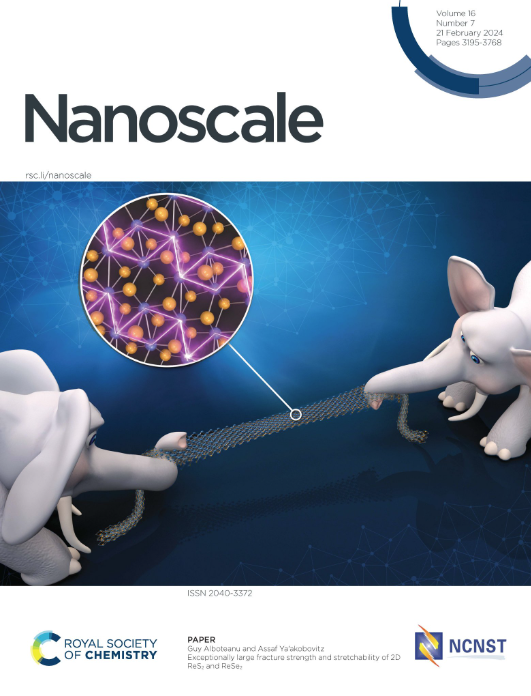Loading Pt clusters is more conductive for photocatalytic hydrogen evolution compared to single atoms and nanoparticles
IF 5.8
3区 材料科学
Q1 CHEMISTRY, MULTIDISCIPLINARY
引用次数: 0
Abstract
Pt/TiO2 photocatalysts were synthesized using incipient wetness impregnation followed by oxidative and/or reductive thermal treatments. The loading dimensions of Pt elements on the TiO2 surface (PtP, PtSA, and PtC) were controlled by varying the impregnated solution. Experimental results demonstrate that PtC with intermediate size exhibits the highest photolysis rate under 300W xenon lamp irradiation, achieving a hydrogen yield of 11.42 mmol g^-1 h^-1 and an apparent quantum yield of 40.65%. Similarly, Ru/TiO2 and Ir/TiO2 photocatalysts prepared under the same conditions exhibited the same pattern. Photoelectrochemical tests reveal that PtC/TiO2 has the narrowest band gap, the highest interfacial charge transfer capacity, and the greatest carrier separation efficiency. DFT calculations indicate that PtC/TiO2 has the most suitable d-band center, resulting in a close-to-zero ΔGH* value of 0.05 eV. This optimal value significantly balances the adsorption and desorption of hydrogen intermediates (H*) during the photocatalytic hydrogen evolution (PHE) reaction. This study provides new insights into the preparation of precious metal-loaded photocatalysts.与单原子和纳米粒子相比,负载铂簇对光催化析氢具有更强的导电性
Pt/TiO2光催化剂的合成采用初始湿浸渍法,然后进行氧化和/或还原热处理。通过不同的浸渍溶液来控制Pt元素在TiO2表面的负载尺寸(PtP、PtSA和PtC)。实验结果表明,在300W氙灯照射下,中等尺寸的PtC光解速率最高,氢产率为11.42 mmol g^-1 h^-1,表观量子产率为40.65%。同样,在相同条件下制备的Ru/TiO2和Ir/TiO2光催化剂也表现出相同的规律。光电化学测试表明,PtC/TiO2具有最窄的带隙、最高的界面电荷转移能力和最大的载流子分离效率。DFT计算表明,PtC/TiO2具有最合适的d波段中心,其接近于零ΔGH*值为0.05 eV。该最优值显著平衡了光催化析氢反应中氢中间体(H*)的吸附和解吸。本研究为贵金属负载光催化剂的制备提供了新的思路。
本文章由计算机程序翻译,如有差异,请以英文原文为准。
求助全文
约1分钟内获得全文
求助全文
来源期刊

Nanoscale
CHEMISTRY, MULTIDISCIPLINARY-NANOSCIENCE & NANOTECHNOLOGY
CiteScore
12.10
自引率
3.00%
发文量
1628
审稿时长
1.6 months
期刊介绍:
Nanoscale is a high-impact international journal, publishing high-quality research across nanoscience and nanotechnology. Nanoscale publishes a full mix of research articles on experimental and theoretical work, including reviews, communications, and full papers.Highly interdisciplinary, this journal appeals to scientists, researchers and professionals interested in nanoscience and nanotechnology, quantum materials and quantum technology, including the areas of physics, chemistry, biology, medicine, materials, energy/environment, information technology, detection science, healthcare and drug discovery, and electronics.
 求助内容:
求助内容: 应助结果提醒方式:
应助结果提醒方式:


